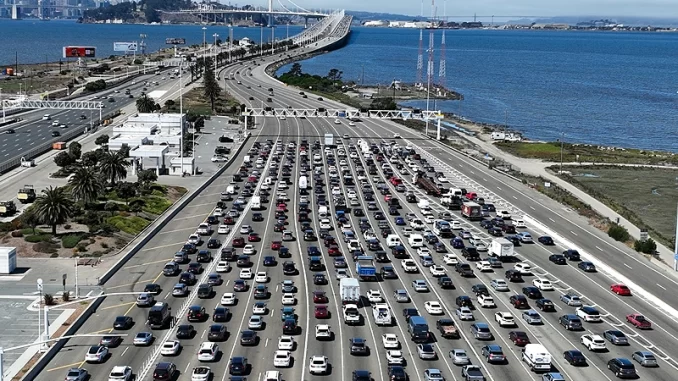

OAN’s Brooke Mallory
6:38 PM – Thursday, May 25, 2023
It is becoming difficult to ignore or deny the very real, overwhelming migration out of California. The Golden State was a “top outbound” region back in 2020, according to United Van Lines, and in 2023, the “big leave” is only becoming more common.
Advertisement
As a result, it is crucial to comprehend what has caused the departure of residents. According to reports, this flight is being driven by both economic and quality-of-life issues.
From an economic standpoint, inhabitants are constrained by high housing costs, exorbitant energy bills, rising taxes, and a general high cost of living that more than balances California’s higher-than-average household income statistics.
The state’s quality of life is being eroded by issues such as rising crime, expanding urban blight, and growing inconveniences like traffic and wildfires. Los Angeles, California, is also where the term “road rage” first originated. Cities in California are famed for their gridlocked traffic.
Companies are being pushed out by the state’s high and rising business taxes, soft-on-crime policies, excessively onerous regulations, and anti-business atmosphere in comparison to other states. It becomes more difficult for legislators to solve long-term structural issues like the state’s unfunded pensions or the required investments in roads, highways, and bridges as residents and businesses leave the state.
However, the good news is that public policy has the power to stop the “big leave” if it is in fact public policy that is causing the mass exodus.
Zoning regulations and the California Environmental Quality Act (CEQA) could be modified in order to lower housing costs. There could be a push to change the state’s energy and global warming laws in order to reduce the state’s rising energy poverty issue. Energy and regulatory costs could also be reduced, which would help California’s high food and transportation prices.
Other ideas have included enacting tax reform to increase Californians’ incentive to work and save money, lowering the state’s revenue volatility, and minimizing the negative effects of the state’s extremely unpredictable budget.
Many California residents who work with private charities have expressed a willingness to support long-term solutions to the homelessness crisis, with an emphasis on tackling the root causes of the issue rather than just simply housing individuals who lack the educational resources to improve their situation.
Governor Gavin Newsom recently came out with a statement this month regarding his goals in shifting the state to what he believes is “Build[ing] California’s Clean Future, Faster.”
“Governor Newsom’s proposals would streamline projects to unleash construction across the state, accelerating the building of clean infrastructure so California can reach its world-leading climate goals while creating hundreds of thousands of jobs,” the statement read, posted on his Governor’s Office website.
Many residents have countered that California is already heavily in debt and that climate change is the least of the state’s concerns, especially in light of the growing homelessness crisis mentioned, for which he has pledged to use more tax dollars to place homeless people in hotels without addressing any root causes of their homelessness.
Californians have come out saying that it should not be necessary for them to accept a future characterized by escalating economic hardship, a declining standard of living, criminals getting a “slap on the wrist,” and the rising migration of citizens and enterprises. Since these detrimental tendencies are usually a direct result of careless and misguided government decisions, they could (in theory) be reversed by implementing the necessary modifications.
Between April 1st, 2020, and July 1st, 2022, the U.S. Census Bureau saw around 82,235 people move from California to Texas.
In 2020 alone, California also lost a net total of 37,800 inhabitants to Arizona in that year.
Additionally, renting a U-Haul truck one-way from California to Texas costs more than twice as much as renting from the same company and going from Texas to California.
The Texas real estate market has also been severely impacted due to this migration. An influx of new California money primarily affected the north DFW real estate market, where it led to unchecked price growth and scarcity.
Although it is not uncommon for people to frequently move within and between states, the pandemic offered fresh motivations and opportunities for relocating. However, in California, exits now significantly outnumber arrivals.
Another reason that some have suggested people are migrating is due to the growing trend of remote work during the pandemic.
Many Americans were able to relocate thanks to the pandemic’s trend toward this form of at-home employment. For the first time, many found themselves in a situation where they did not have to pick between a career and their preferred geography.
However, if one were to look at the “bright side,” it is also true that the Golden State consistently gains net residents from states like New York, Illinois, New Jersey, and Massachusetts.
Stay informed! Receive breaking news blasts directly to your inbox for free. Subscribe here. https://www.oann.com/alerts

